Contents

A urine sample according to Zimnitsky is an additional laboratory test that can be used to assess the functional abilities of the kidneys and suspect pathologies in time, manifested by malfunctions in the urinary system. The technique was developed by the doctor S. S. Zimnitsky at the beginning of the twentieth century – in 1924, and is still actively used in clinical practice. Its essence lies in the collection of all urine excreted by the patient per day, in separate containers marked by the hour. This allows you to draw conclusions about the quality of glomerular filtration of the kidneys “in real time”, that is, to track how the organs cope with their duties throughout the day.
The indisputable advantages of the technique include its simplicity and accessibility – no sophisticated equipment is required for analysis, all the necessary instruments and reagents are at the disposal of any laboratory. Since urine collection according to Zimnitsky is carried out at regular intervals during the day, and the accumulated biomaterial has a rather large volume and takes up a lot of space, this study is usually carried out in a hospital. But you can also collect urine correctly at home – we will tell you how to do this, and we will also give the norms for the results of a urine test according to Zimnitsky, explain in an accessible language what this test shows, why it is needed, what deviations can be and what is their probable cause .
What does the analysis of urine according to Zimnitsky show?
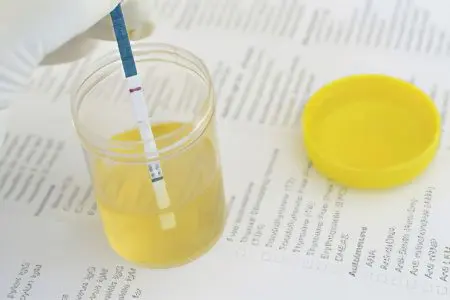
During the study, the following indicators are determined:
Liquid volumeconsumed by the patient per day – for this it is necessary to keep a food diary, which records the time of drinking or taking liquid meals, as well as the volume of servings in milliliters;
Daily diuresis is the total volume of urine excreted during the control period. To calculate it, the laboratory assistant adds up the contents of all containers;
The ratio of fluid drunk to diuresis – normally, 65-80% of the incoming water is excreted from the body with urine, the rest goes to current needs, and also comes out with sweating;
The ratio of nighttime diuresis to daytime – a healthy person does not wake up during sleep in order to go to the toilet, and the volume of the morning portion of urine accumulated by the body during the night does not exceed one third of the daily diuresis;
Urine production rate after taking large volumes of liquid – well-functioning kidneys quickly filter the water that has come from the digestive tract and evacuate everything superfluous from the body with it;
fluctuations in urine density in different portions – it should not differ in too large amplitude;
Urine density in the control container and its average density in all containers must comply with the established standards.
The main thing that the analysis of urine according to Zimnitsky shows is precisely its density or, in other words, specific gravity, that is, the ratio of the solid part of the solution to water. This solid part is formed by nitrogenous compounds, various organic substances, acids and salts. Serious deviations in the density of urine from the norm in one direction or another, as well as strong fluctuations in specific gravity during the day, are unfavorable diagnostic signs and may indicate a number of serious diseases.
Indication for the study

Urinalysis according to Zimnitsky is prescribed for both adults and young children, and especially often for expectant mothers. During pregnancy, the fluid balance in a woman’s body changes to meet the needs of the growing fetus, and her kidneys are forced to temporarily work for two. Alarming results of a general urine test, the presence of glucose, protein, an increased level of leukocytes in it, as well as edema, severe toxicosis and jumps in blood pressure – all this is a reason for conducting a urine test according to Zimnitsky in pregnant women.
As for other categories of patients, the indications for them are as follows:
Violation of the urination regimen – frequent urge, prolonged absence of urine, its abnormally small or large volumes;
Pain during or after urination, pain in the lower abdomen or back;
Change in color, consistency or smell of urine, the presence of pathological impurities in it (foam, flakes, blood, pus);
Constant thirst;
Hyperhidrosis (excessive sweating);
The systematic occurrence of edema;
Dizziness, weakness, headaches, fainting;
Rapid or rare heartbeat, pain behind the sternum;
Cold extremities, clammy sweat, fits of fear;
Poor results of other tests (general or biochemical blood test, urinalysis);
Already existing diagnoses – diabetes mellitus, glomerulonephritis, amyloidosis, liver cirrhosis, renal or heart failure, hypertension or hypotension, heavy metal poisoning, and so on – to determine the severity of the disease or control the course of treatment.
How to prepare for urine collection according to Zimnitsky?
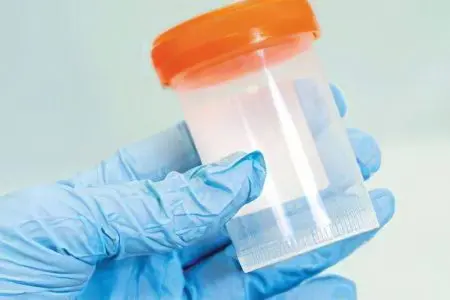
This study does not require special preliminary preparation; you do not need to follow a diet or any special drinking regimen either. The test should show how your kidneys work under normal conditions. It is only recommended to refrain from eating very salty and spicy foods that provoke severe thirst. You should not somehow artificially load the body by drinking a lot of water just like that.
The main preparatory activities are the purchase of sterile medical containers for collecting and transporting urine. Their standard capacity is 200-250 ml, the minimum quantity is 8 pieces, but it is better to take 2-3 spare ones. If you do not have the opportunity to acquire such containers, it is quite possible to adapt glass jars of a similar volume (like those in which mayonnaise is sold) to collect urine for analysis according to Zimnitsky. The container must be sterilized over steam for 2-3 minutes, and the lids must be boiled.
Prepared containers or jars should be labeled with time intervals:
09:00-12:00
12:00-15:00
15:00-18:00
18:00-21:00
21:00-00:00
00:00-03:00
03:00-06:00
06:00-09:00
How to collect urine for analysis according to Zimnitsky?
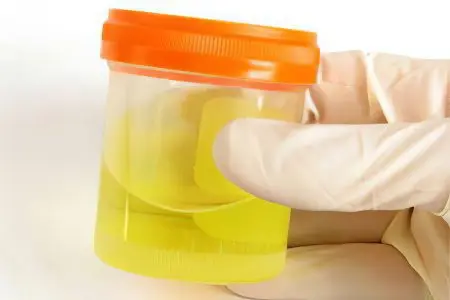
So, the container is prepared, you woke up at 6:00-7:00 o’clock – go to the toilet as usual and urinate into the toilet. Sample collection for testing will begin at 9 am. It is best to set a series of alarms on your phone or smartphone every three hours until 6 am the next day – a total of 8 calls. There is no need to take special hygiene measures, it is enough to wash with ordinary soap. But this procedure should be repeated before each regular urine collection session.
When the alarm goes off, you need to take a container with the appropriate markings and urinate there, and absolutely all the excreted urine should be in the container. If you don’t feel like writing at this point, set the container aside. There will be a urge until the next alarm clock – urinate in the right container. The urge is repeated, the container is not yet full, and the time for the next collection has not come – continue to urinate in the same place. There was not enough volume of the container – take a spare and inscribe it in the same way. Seal filled containers with lids and store in the refrigerator. They will need to be delivered to the laboratory the next morning.
During the day, keep a food diary – write down the volumes of all the liquids that you drink and eat (water, tea, coffee, juices, soups, sour-milk drinks, juicy fruits and raw vegetables in significant quantities).
To understand very clearly how to collect urine for analysis according to Zimnitsky, let’s look at this process using the example of a table with data from one patient:
Time | Fluid Diary | Number of urination | Urine output |
09:00-12:00 | Cup of tea (300 ml) | 1 | 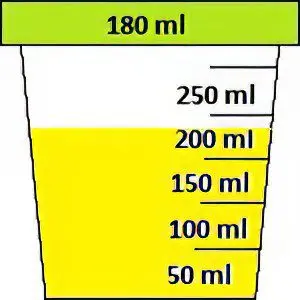 |
12:00-15:00 | A serving of soup (350 ml) Cup of coffee (180 ml) | 1 | 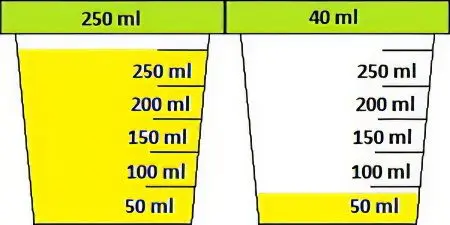 |
15:00-18:00 | Glass of juice (250 ml) Watermelon (300 g) | 2 | 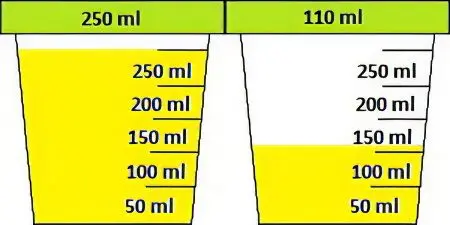 |
18:00-21:00 | Cup of tea (300 ml) | 1 | 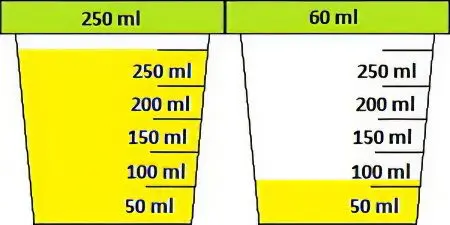 |
21:00-00:00 | A glass of kefir (200 ml) | 1 | 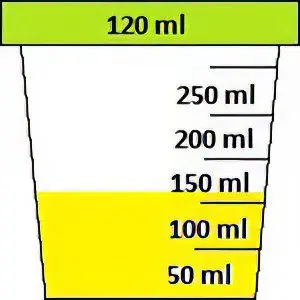 |
00:00-03:00 | — | 1 | 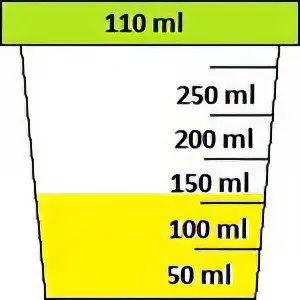 |
03:00-06:00 | Glass of water (200 ml) | 0 | 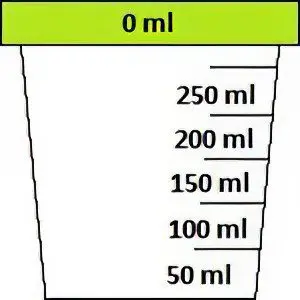 |
06:00-09:00 | Cup of coffee (180 ml) | 1 | 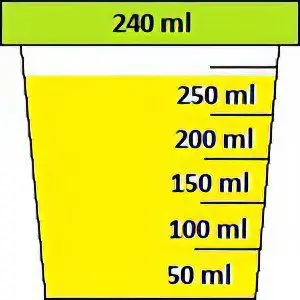 |
Liquids drunk: | 2260 ml | ||
Daily diuresis: | 1610 ml | ||
The ratio of diuresis to fluid: | 71,23% | ||
The ratio of nighttime diuresis to daytime: | 29,19% | ||
Video: urine analysis according to Nechiporenko and Zimnytsky in normal and pathological conditions:









